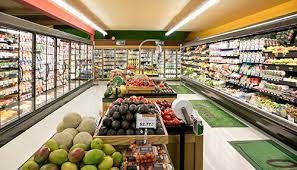
Is a Grocery Business Profitable
Before starting a grocery store, there are some things to consider. The gross margin is the difference between the cost of the product and the price you charge. Sometimes the gross margin is negative, especially for key value items. However, this loss is offset by the higher margin items. In addition, some grocery items are sold below cost to maintain customer perception of value. Profit margin for these products can be as low as 10%. A successful grocery store has a gross margin that is more than 70%.
Profit margin
The profit margin of a grocery store varies widely. Bread, milk, butter, and other staples have low profit margins while other items, like beauty products, earn a higher margin, ranging from twenty to thirty percent. You can also increase the profit margin by packaging your own items. It’s important to note, however, that the profit margin isn’t the only metric you should consider. While you’re evaluating your business model, take note of the profit margins of each category.
For example, let’s say your grocery store sells $100,000 of products. This would yield a cost of goods sold of $50,000 and an operating expense of $45,000. This would result in a net profit of $5,000, or about five percent of sales. While this isn’t the highest profit margin you can have for a grocery store, it’s good enough. The profit margin of a grocery store is generally between two and three percent, which means you’ll be making a decent profit even if your store doesn’t sell many items.
Cost of opening a grocery store
The cost of opening a grocery store varies depending on the type of establishment and the size of the store. Large stores require more investment than small ones, and the average start-up cost is over $500,000 for a medium-sized store. Some expenses are recurring monthly fees, while others are larger, one-time expenses. Before opening, you should gather enough working capital and cash to cover these costs. However, larger one-time expenses can be depreciated.
Other expenses that increase the startup cost of a grocery store are marketing, branding, and promotion. Hiring an expert to develop these marketing strategies will increase the overall cost of opening a grocery store. In addition, you’ll need to hire a professional to help you set up your legal base, which will increase the startup cost. Finally, you’ll need to decide what kind of grocery store you’ll open. Some retailers specialize in a particular type of grocery, while others specialize in one specific area.
Cost of furnishing and equipping a grocery store
The cost of furnishing and equipping a grocery shop depends on several factors. The size of the store and its specialty will affect the cost. While smaller stores are less expensive to set up, larger ones require a larger space and will cost more. Utility costs will also vary, depending on the types of food sold. Utility costs can range anywhere from $49 per month to $5,000 per month, depending on the size of the freezer section.
The average cost of furnishing and equipping a grocery shop ranges from $70,000 to $160,000. A good point-of-sale system will cost around $40,000. Another large expense is the initial inventory, which can run up to $160,000. The costs of pre-opening advertising and security deposits can also add up to a large chunk of the overall cost. Some of the larger one-time expenses can be deducted over time.
Starting costs of a grocery store
If you’re starting a grocery business, you will need to estimate the startup costs. These costs are divided into two categories – one-time expenses and ongoing expenses. These expenses include real estate, insurance, wages, and business taxes. You’ll also need to invest in inventory pricing, signage, and equipment. The Small Business Administration can help you finance these costs. Once you know how much money you’ll need to start your business, you can work out a plan to cover your expenses.
In addition to the initial startup cost, you’ll need to hire employees to run the store. Hiring employees will add to your operating costs, so you’ll want to hire the right staff for your business. It’s also important to hire a marketing team to promote your store and sell your corporate culture. Depending on the size of your store, you may need to hire several people. Generally, it will cost more to hire employees than to rent space.


